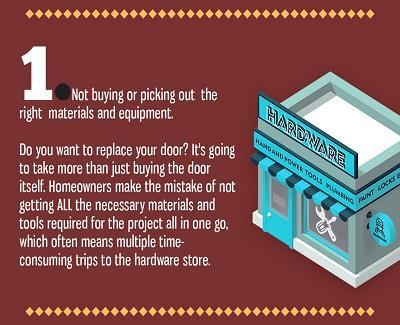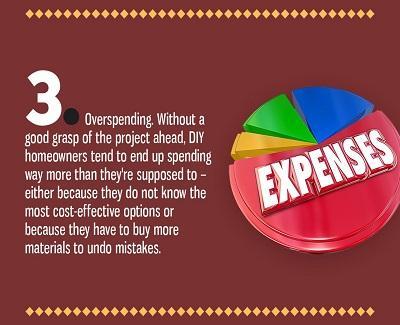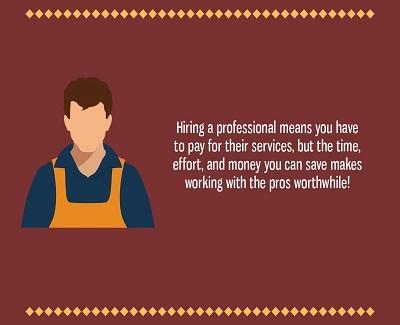Most Americans take great pride in their homes, such that they often equate the dollar-and-cent values of their homes with their own self-worth.
In a society where early independence is expected, “making it” is closely associated with attaining success: at your job or at running your own business, owning and driving your own car (or being chauffered in one), and certainly, your capacity to own your own home or homes.
And the more successful you get to be, the more important it seems to be for your home –as an extension of yourself – to reflect that success. Home upgrades are often a way both to affirm to yourself that you’re moving in the right direction, and to reward yourself for the hard work you’ve already put in to get to where you are – a step closer to where you want to be.

Just as you might upgrade your old car, or your wardrobe when it starts to fall out of fashion, upgrading your home becomes an important part of being a homeowner and keeping up, or ahead of, the rest of the pack.
Upgrading your home isn’t quite the same as buying new clothes, or even purchasing your own car, however. While your ideas and insights form a large part of, and are integral to, the upgrade and remodeling process, the nitty-gritty of the home remodeling work should really be left to professionals. Just because you think you can do the job on your own doesn’t necessarily mean you can actually get it done. It’s too easy for a well-meaning homeowner to end up ruining his home instead of enhancing it by trying to cut corners and save a little by not hiring professional contractors. Here are a few examples:
Mistake #1: Not making the right purchases

Mistakes in purchasing – this ultimately boils down to a matter of not buying enough, not buying the right things, or buying entirely the wrong things. Anyone who’s had to buy materials for something they’re not altogether familiar with will know what it’s like not to know exactly what to buy and, in haste, take a costly stab in the dark.
While remodeling your home isn’t quite rocket science, it does require more than a casual familiarity with the principles of construction, planning, and estimating the amounts of materials and work involved. Remodeling your home without the requisite knowledge or experience is like trying to fix something without knowing exactly what’s wrong or what you need to fix it. You might get lucky, but you could also end up breaking whatever it was you were trying to fix.
Mistake #2: Problems with scheduling

…which brings us neatly to the next item: scheduling. Knowing and understanding the extent of the remodeling process allows a professional to properly plan and schedule the work, and all the little details that go with it, so that everything goes smoothly.
It’s not just a matter of avoiding delays and having your home potentially exposed to the elements longer than it should be – though that poses its own problems, actually. Rather, the ability to properly schedule the work means being able to integrate things like the delivery of the materials, disposal of waste material (old shingles, parts of the old wall you had to have taken down to make way for the new addition, etc), and even scheduling which people and teams to have working on your home on any given day.
Keeping everything streamlined reduces delay, cost, and waste. Without proper scheduling, you’re bound to run into large amounts of all three.
Mistake #3: Unnecessary expenditures

And that brings us to the third most common home improvement mistake: unnecessary expenditures. This is more than buying the wrong thing, or over- or under-buying, however.
The worst kind of unnecessary expenditure is when you have to spend more on, or spend again, for things you’ve already spent on to make up for mistakes in the work. Unfamiliarity with correct work practices, coupled with the likelihood that a do-it-yourselfer is trying to pick up the tricks of the trade on the job, can easily lead to damage to your home and the materials you’re trying to install.
It’s bad enough having to buy construction material that ended up going to waste due to negligence or unfamiliarity. But if you do end up doing inadvertent damage to your home, you may have to hire professionals to correct the damage, in addition to doing the work you intended anyway. In trying to save a buck, you end up spending more than you should have, had you simply hired professionals to do the job in the first place.

Ultimately, hiring a professional to work on your home is just a matter of hiring the right people to get the job done. As specialists in this kind of work, you can trust the the pros to know all the little tips and tricks that are geared towards getting the job done, and done right, in the least amount of time and with the least amount of wasted resources. Cutting corners will just cause you more misery and increase your costs. Go with the pros, spend less, and avoid the hassles and headaches that often come with DIY work.
============================================================
Author Bio:
In his work as vice president of Homecraft, Inc., John Zatwarnytsky helps see to it that everything flows smoothly during each project. John is passionate about the quality of service he and the company give to their clients. His blog writing allows him to reach out to a wider audience to address common roofing and home improvement concerns.
============================================================
